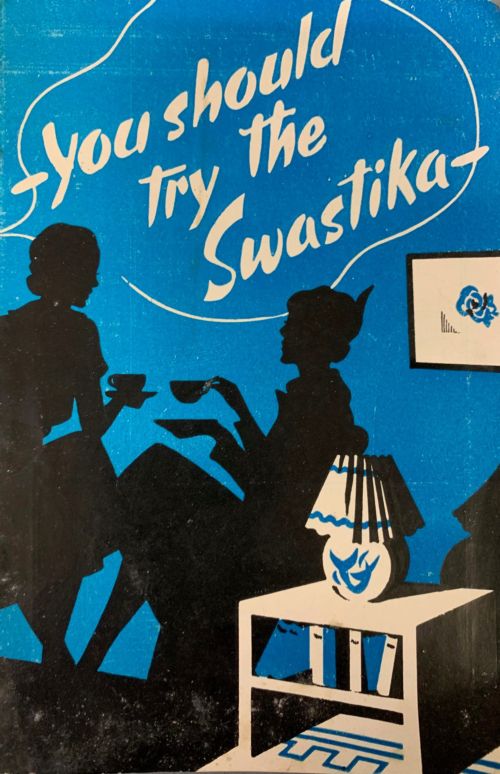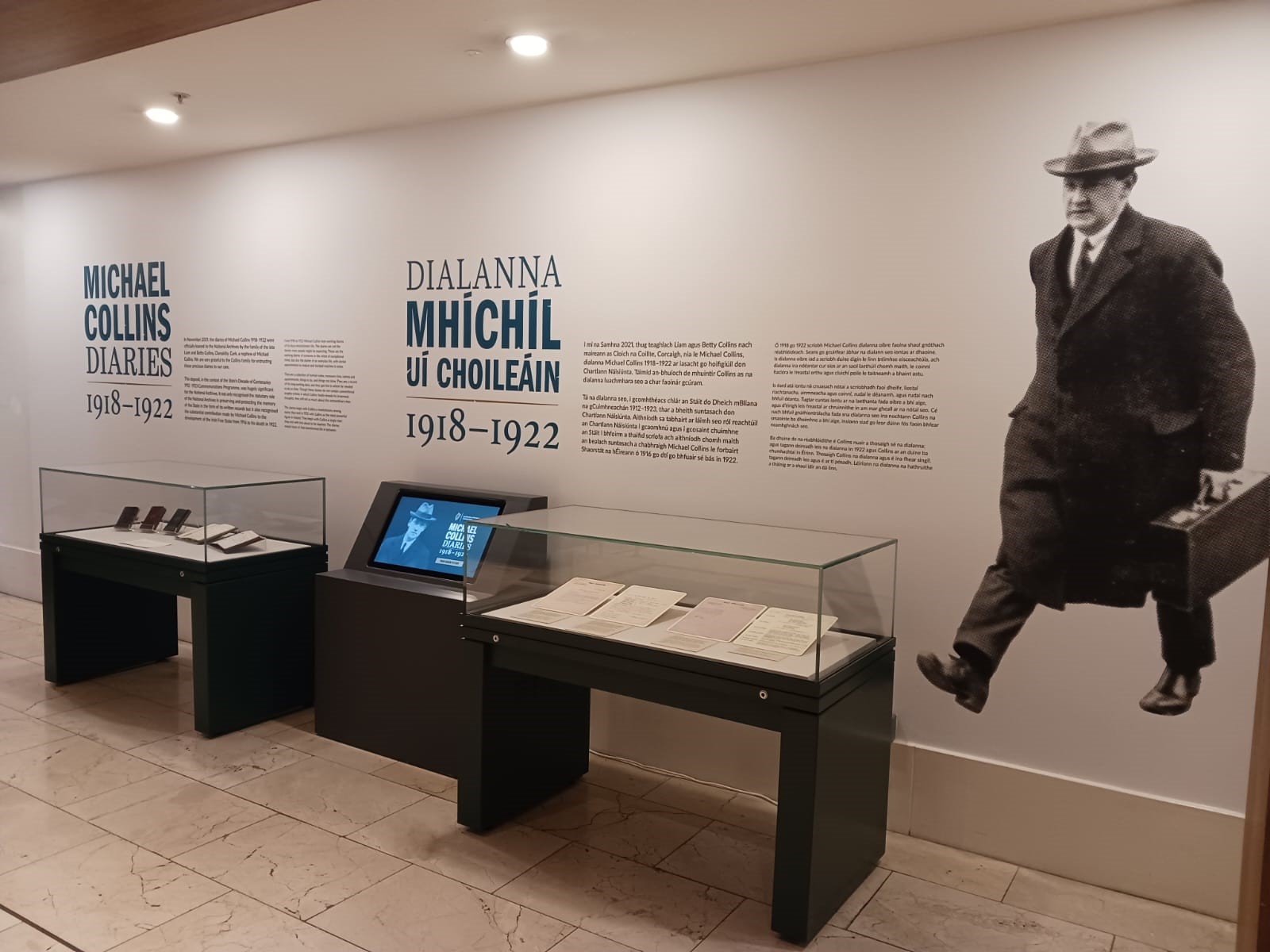Behind the Scenes
Behind the Scenes: The Swastika Laundry (PRIV1380)

The Swastika laundry was founded by John W. Brittain. He had been born in Manorhamilton, County Leitrim in 1871 and spent his early years in business in Belfast. A pioneer in laundry development in Ireland, he was one of the founders of the Metropolitan and White Heather Laundry firms in Dublin at the turn of the last century and he established the Swastika laundry in Ballsbridge in 1912. He had decided to use the swastika, which was then only an ancient symbol of good fortune, as a logo for the laundry two years earlier. In 1910, he visited the Great Industrial Exhibition in London and was struck by an ornament at a stand of a black cat with a swastika strung round its neck. Both were symbols of good luck, and there they were together. He bought the ornament and resolved there and then to adopt the swastika as the trade mark of the laundry he planned to open in Dublin. The ornament held pride of place in the directors’ board room of the laundry thereafter and for many years it was the firms practice to issue a replica of the gold swastika ornament worn by the black cat to their customers.
In the publicity surrounding the opening of the firm, it was pointed out that the swastika was the world wide good luck charm which signified goodness and excellence. The laundry, the public was told, “stands of a beautiful site of 3 ½ acres, surrounded by stately trees and fresh green lawns, free from smoke and dust. Linen dressed by us is redolent of fresh air and sunshine”. The purity of the cleaning process was emphasised. No injurious substances like bleaching powder, caustic soda, caustic potash or oxalic acid was used and the linen was “cleansed snowy white by Vartry water [and] sterilized and disinfected by Electric Fluid made on the premises by the only plant of the kind in Ireland”.
In the late 1920s and 1930s a horse called the Swastika Rose, which was owned by J. W. Brittain, was a successful show-jumper. A big roan mare, Swastika Rose had originally come from Tipperary as a 5 year old to pull a laundry van for the Swastika. Her talent as a jumper was soon recognised and she became a popular performer at the RDS, often ridden by the noted athlete and sportswoman, Peggy Morgan Byrne. The company also used electric vans, coloured red and decorated with a white swastika on a black roundel. It was one of these vans that almost ran down the German writer Heinrich Boll, when he visited Dublin in 1954. Boll, who had been wounded in the war, was a vehement anti-Nazi. He had been initially shocked by the similarity the van had to those used in Germany to distribute the Nazi party newspaper, until he read the date of establishment of the company which was painted beneath the swastika.
John W. Brittain died in 1937 after playing a prominent part in business and public life in Ireland. For 10 years he had been chairman of the old Pembroke U.D.C. and he had served for many years on the board of Sir Patrick Dun’s Hospital. His son, Mr E.A. Brittain, had grown up with the business and took over control on the death of his father. He continued the expansion of the laundry. Bells, Dyers and Cleaners, was purchased and later Dunlop’s Laundry, and both firms functioned as an adjunct to the Swastika. He also purchased the Monarch Laundry in Manchester which he modernised and turned into one of the leading English laundries. In the mid-1950s the laundry was completely upgraded and production streamlined. The number of branch offices were increased and many of them were artistically re-designed on contemporary lines. The distinguished Irish painter, Richard Kingston (1922 – 2003) was employed by the Swastika in 1957 and worked for six or seven years in charge of their advertising and displays.
In 1957 the Swastika Laundry group laundered no less than 1,670,000 shirts and 11 million other articles. 2,500 tons of coal were used and 50 tons of soap. The laundry employed 600 people around this time, and those in the main laundry area worked to the sound of ‘Music While You Work’, a BBC daytime radio music programme which originated during the war and was specifically aimed at factory workers. Peter Brittan, grandson of the founder, later served as managing director of company.
The logo and name continued in use until the Ballsbridge premises closed in 1987. The laundry will mainly be remembered for its use of the swastika logo. It was said that throughout the Second World War and after that this was possibly the sole benign public display in Europe of this ancient symbol of peace and good luck.
Brian Donnelly, Senior Archivist


